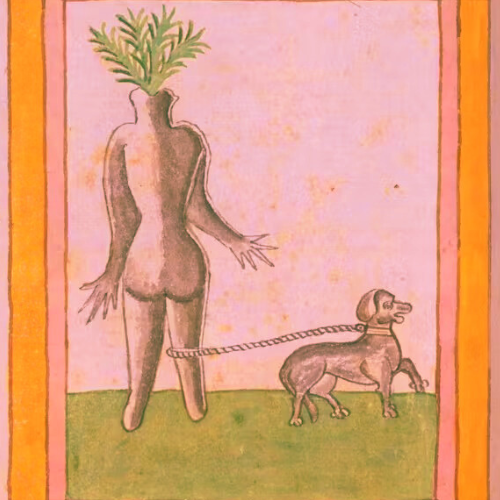June 18 // Glace and Yellow Water
Doingt-doingt-doingt-doingt: I think there’s something wrong with my kickstand, and with every pass of my pedal that clips the fucker, my anger swells like a (and not my) middle-aged prostate: to an extent that it’s worth mentioning in a blog about cycling.
“Just lean it against a fucking tree,” Mark would’ve said, categorically opposed to the concept of bikes with legs, and yet I found myself plagued during pre-departure by the question of whether to kickstand or not. Arbitrary, all just fucking arbitrary, and an apt insight into the kind of constant auto-negotiation to which I subjected myself with every waking moment before the trip.
Whether or not my bike needs a crutch seems like an appropriate metaphor for this extreme need I seem to have for external validation and its relationship with my psyche, no? That wasn’t rhetorical, by the way: really, what do you think?
Nevertheless, the good folks at Towne Cycles made the decision to supply me with this erectable steely dan during their last-second round of alterations, bless them, and though this clicking is due to no fault of their workmanship, it does persist.
I do weigh the impulse of driving my bike from the village of Doingt directly into the Somme River. Instead, so full of self-determination I am now, as a full-fledged Francigena-riding veteran, I leverage that click into my own mental back beat. Humming in time, as you do, to that Yves Montand cover of that British WWI-era classic, “Roses of Picardy”, which has been stuck in my head since we arrived in the region several days ago.
It’s still not entirely clear to me, by the way, what a Picardy (or Picardie, if you prefer) actually is: we’re in “department” of Somme, about to cross over into Aisne, and though each seems to have once been contained in the Picardy as drawn up during the Old (pre-Revolution) Regime. Established as its own region between 1972 and 2015, this chalky plain has been all Hauts-de-France for the last decade.
More than geographical or political, however, it seems Picardy1 is a cultural and linguistic region that stretches from where we are now all the way to Belgian Wallonia. And though their language is considered little more than another patois by the French government, it’s distinctly its own dialect that remains under threat of being lost to time—oh wait, it’s gone. The clicking is gone.
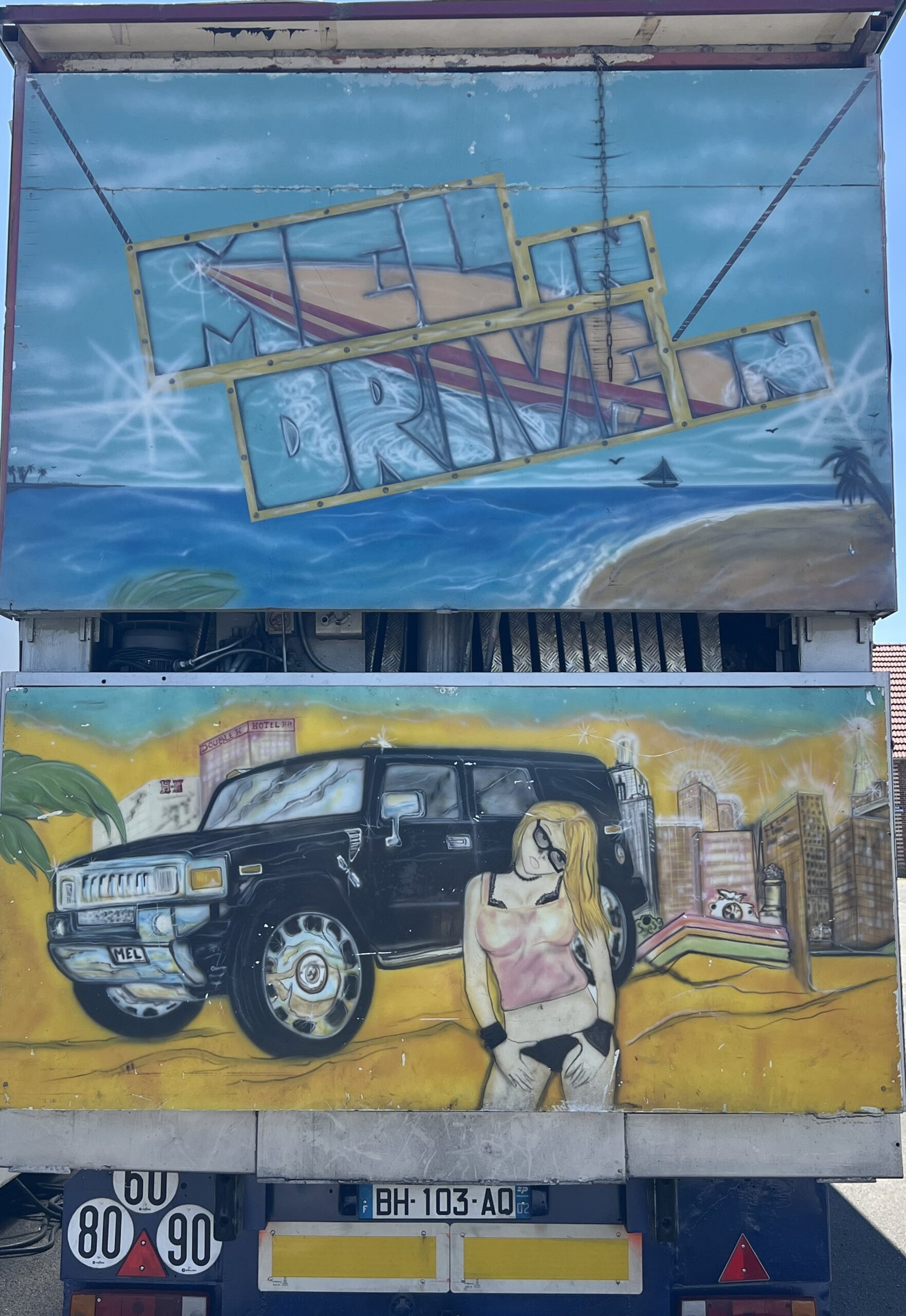
I’m no linguist, but Picard might be to blame for what we’d otherwise presumed to be Irish-sounding names on the bars and restaurants in the region. One such example is—segue—O P’tit Couvron.
However ticky-tac is its interior, with false wood laminate everywhere, the and/or any restaurant is a sight for hungry eyes at this particular 1:30pm, given that we haven’t eaten much more than that soggy baguette in some 24 hours: the roast chicken listed on the chalkboard outside, in particular, has my belly tumblin’.
“La cuisine est fermée,” drolls the frazzled young woman behind the counter, fanning herself in the heavy heat of the linoleum bar. Welp.
“She says the kitchen is closed,” I translate for Mark, who understands just fine without my help, thanks.
“In France, people would some make frappe, no?” I ask in my own patois, nodding to a frilly bottle of mint cordial on the counter that sounds so refreshing in this heat.
“Certains le font, she offers while tallying up the bill for the two greedy old farts in the back. “Moi non.”
“‘Some do. I don’t,’ she said,” and I relay the news to Mark having now sucked my very manhood into my stomach.
To be truthful, I’m arguably less concerned about getting what I want or need than I am about making sure they both know I speak French, and am not at all bothered by this woman’s radical ambivalence to my need to eat or drink or relay her region’s relationship to such acts with my paying and patient readership! “Oh look, Mark,” I say, pointing to a flyer on the bar with garbled AI-designed letters in an attempt to distract from the absolute despoliation of my psyche presently underway. “The bar offer classes in 3-D printing.”
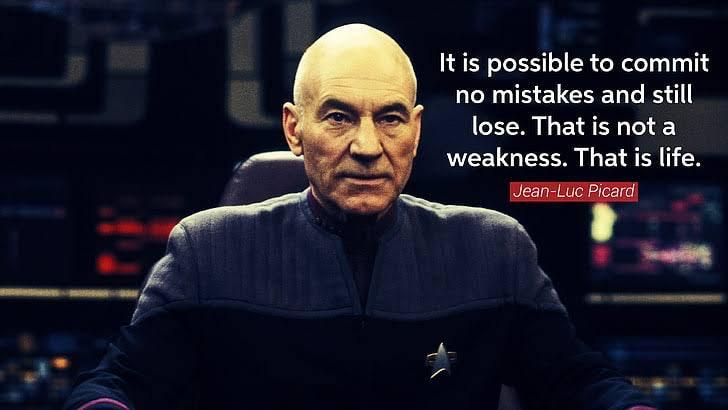
We’ve another 10 miles left until we reach our destination of Laon, and in this heat, every inch feels like a mile in itself, particularly given that I am in possession of two hams that are sunburned to a rabid, bloody pink.
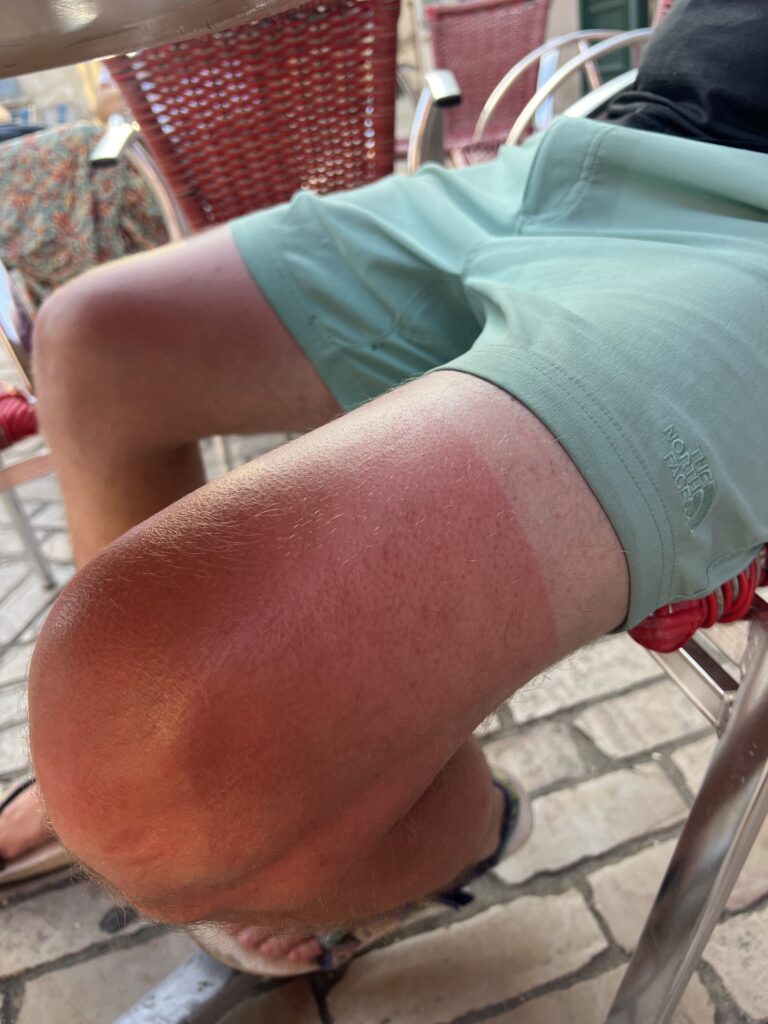
Unbeknownst to my singed self (who is currently biking the wrong way down Rue John Fitzgerald Kennedy to Rue Franklin Roosevelt), this final push proves to be my first “real” climb of the trip, and with Mark many miles ahead and only a 40 pound geriatric lady in a robe within eyeshot, my exhaustion outweighs my shame and I dismount, walking my bike up past Promenade Yitzhak Rabin and Square du Père Marquette2 through the city’s stone walls.
So much for biking the whole of the Via Francigena.
However discomfiting it is for me, I should note that this exact hill made the city of Laon extremely valuable to the Ancient Romans, who fortified what was then known as Lugdunum Clavatum3 back in the first century AD. Hovering safely over the surrounding plain, largely out of reach from would-be marauders like the Huns and the Vandals, Laon would grow to become an important city under the Carolingian dynasty4 onward through World War II, at least enough to entice that methed-out fop Adolph Hitler for a visit in 1940.
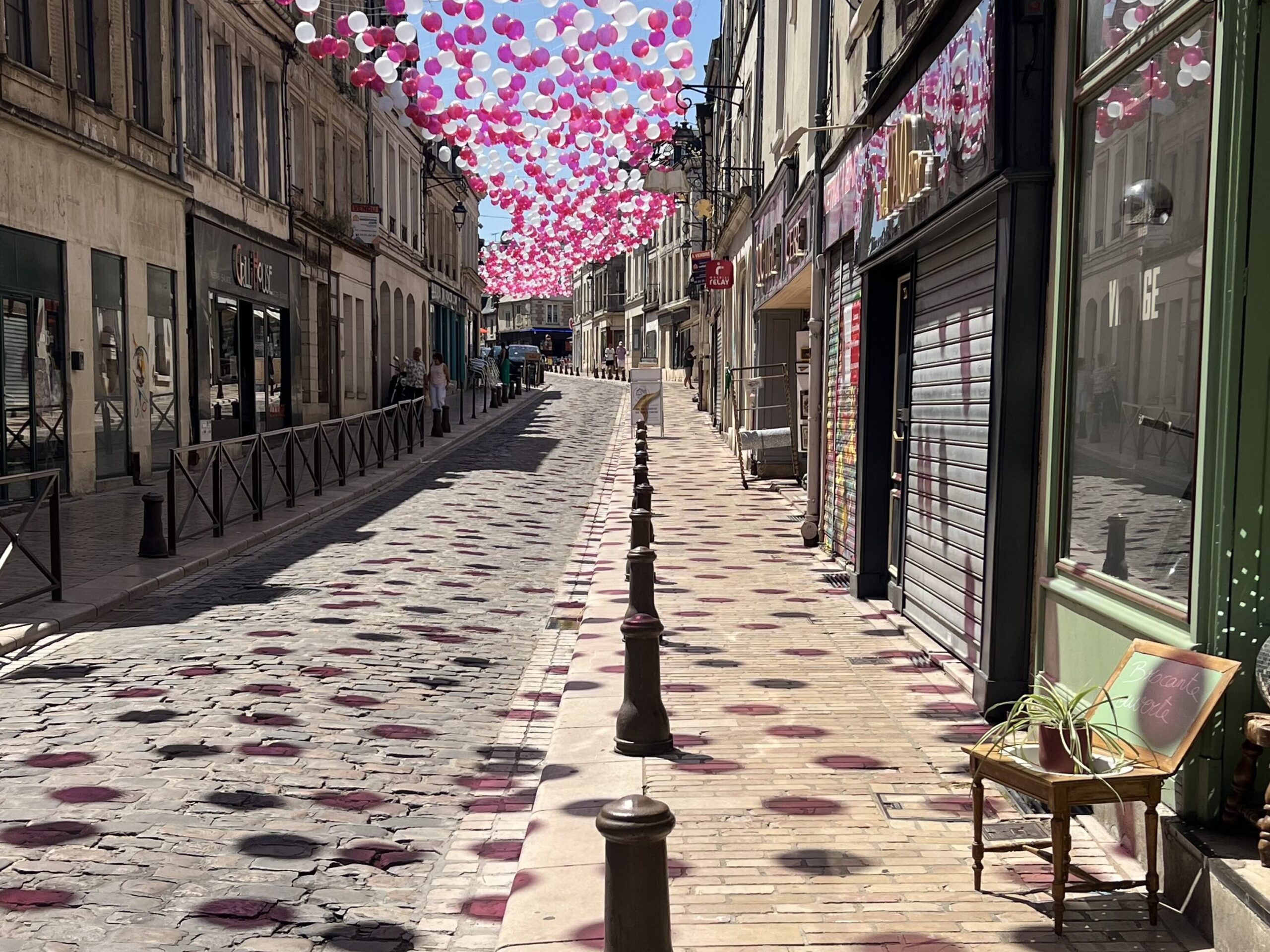
However important it may have been then, it seems someone forgot to relay that message to the present day: the small, kidney-shaped city center, cast in cobbles with the occasional cringe-worthy, “medieval” mural adorning some alley or another, is all but dead today. It’s quite the combination, I must say; though lacking in tourism, it hardly seems like an easy place to life, with a major thoroughfare closed to construction, wilted, overpriced fruit and veg in its two sad minimarts, and their last viable boulangerie having evidently shuttered.
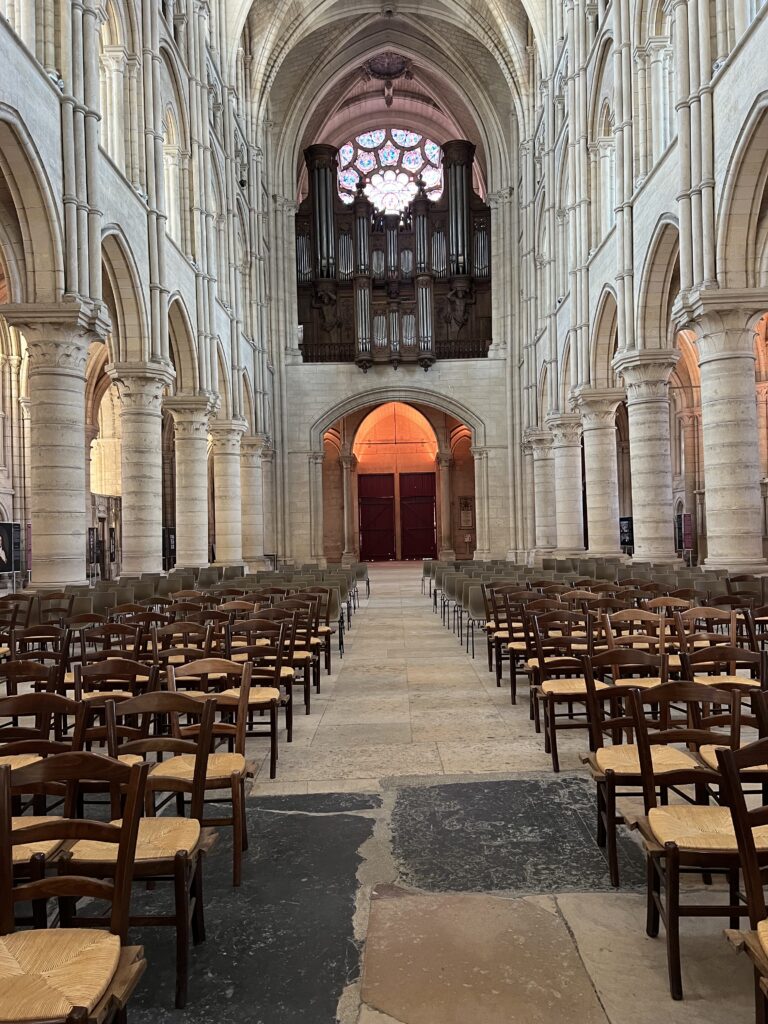
However wanting for freshly baked bread it may be, there is, at least, one hell of a Cathedral in Laon, Gothic as Gothic can be, all cross-shaped and ornate with a giant rose window stuffed to the frame with 12th century stained glass.
Indeed, other than simply housing an overpriced gelato, without much of anything else to do around these parts, the Cathedral does offer us—and the birds living in the triforium—a welcome respite from the heat (as well as a stamp in our pilgrim passports).
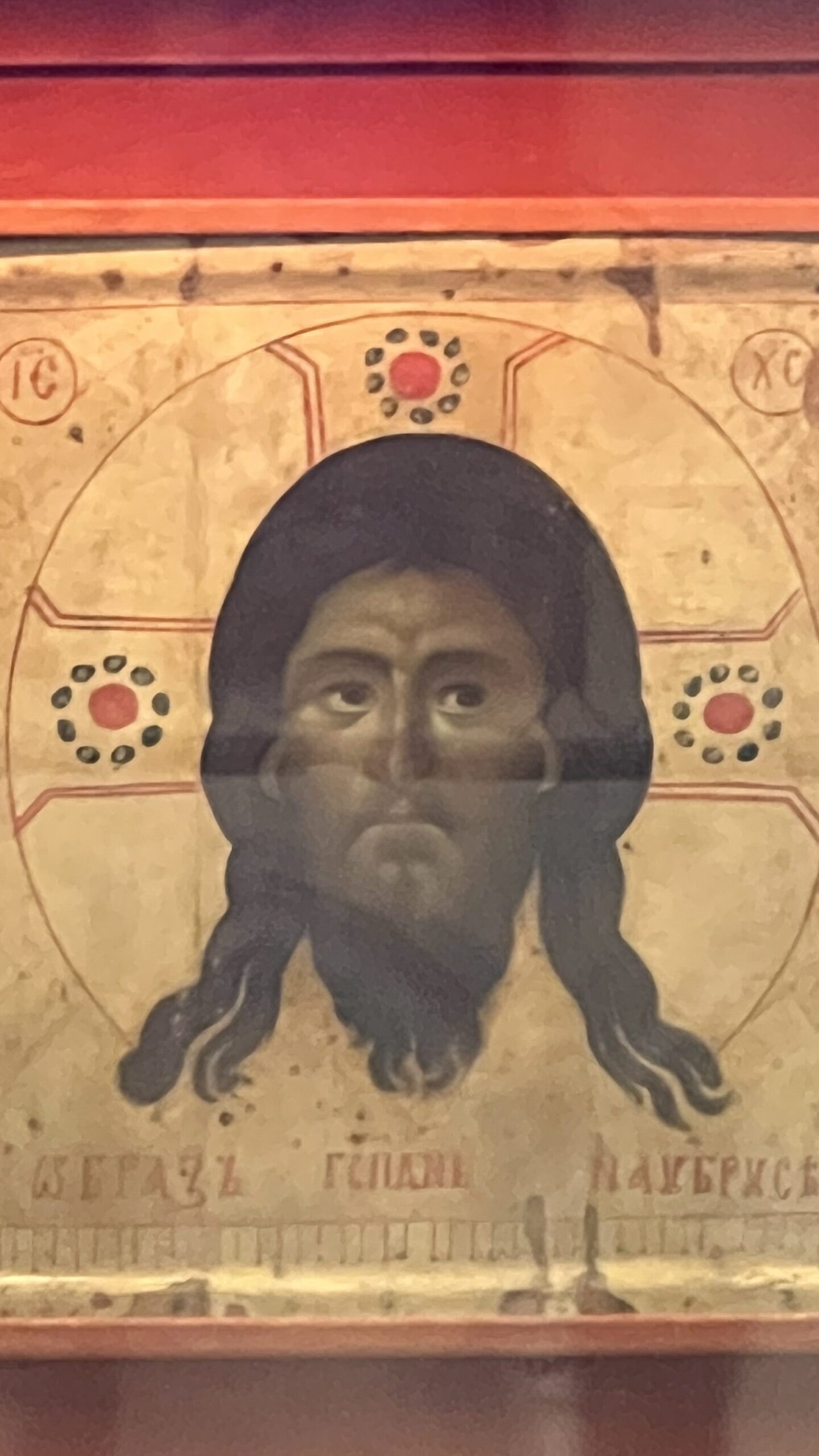
To our moderate surprise, Laon Cathedral also contains one of the oldest icons on the entirety of the Via Francigena: the Holy Face of Laon, a 12th century painting which is considered by some to be among four original hand-made copies of Jesus’ supposed burial Shroud of Turin.5 So there’s that.
One thing to which Laon can most certainly lay claim is pubs, and as the sun begins to set, the majority of what I presume to be locals congregate on the western flank of the kidney, where the renal medulla might be, along the triangular Place Saint-Julien.
Because I am now assertive and resolute, I assertively and resolutely grab a table outside Le Gibus (The Top Hat), which in spite of its name is a rather grimy, white guy-with-dreadlocks kind of place.
Now, you might be expecting white wines and canapés, but we’ve yet to see such a bar on par thus far in France; like everywhere else, this one serves up mostly fancy French beer, shitty French beer, and shitty French beer with other shitty shit in it, like the Panaché (Sprite), the Tango (Grenadine), and the Monaco (Sprite and Grenadine)6.
Mark ain’t feeling much like drinking, and the bartenders make clear they don’t want us taking up their last table, but I’ll be damned if I’m going to sleep while the sun’s still out, and so we order a pair of their cheapest yellow waters and simply sit with them, daring each other to talk to those girls at the table next to us, marinating in silence until, magically, the piss in our respective glasses is gone and we slink back to the fucking hotel.
In summation: Lunch is demi-baked bodega bread, industrial, semi-soft stankcheese with a washed orange rind, and some half-rate pseudo-country pâté. Dinner is a microwaved chicken sandwich from the duly depressingly false bakery in the piazza across from The Top Hat. Life is unequivocally underway. Sleep is difficult with the preponderance of flies attracted to the remains of the stankcheese and pâté and the people in the room above ours who arrive at midnight with rolling suitcases.
Glamour! Romance! France! At least my kickstand is working. Make it so.
1 Picards, whether Captain Jean-Luc or civilian, got their name from from the pikes these people would wield back in the middle ages.
2 Born in Laon, Jacques Marquette is the Jesuit missionary for whom the alma mater of Bob Newhart Show alumnus Peter Bonerz, not to mention former Basketball Person Rick Majerus and alternatingly alive comedic siblings Kevin and Chris Farley.
3 As far as I can tell, this translates roughly to “studded fortress of [the Celtic god] Lugus.” How funny is that!
4 Not for nothing, it was also the birthplace of Bertrada of Laon, also known as Bertha Broadfoot (a nickname that has historians thinking she may well have had a club foot). Before she and her husband, Pepin the Short, became the first Carolingian royals, and before they gave birth to that guy, Charlemagne, they led the Franks; in 756, as the Byzantine Empire collapsed, Pepin claimed Rome and its surrounds, “donating” it to Pope Stephen II, in turn ensuring the establishment the Papal States. The name Via Francigena, then, can be traced to their reign.
5 Notably: in a letter dating back to 1249 presenting the painting, Archdeacon of Laon Cathedral Jacques of Troyes goes out of his way to note, in the noble spirit of one Megyn Kelly, that Geezus Is Aktwally White: “Do not be surprised if you find his [Face] blackened and sunburnt, since for those who dwell in temperate and cold climates and who live all the time in pleasant places have fair, delicate skin, whereas those who are always in the fields have burnt, darkened skin. This is the case with the Holy Face, bronzed by the heat of the sun.”
6 Lore dictates that the drink lent its name to the clandestine “Monaco” meeting held on January 25, 1944 in the alpine village of Méaudre, where the groundwork was laid for the Departmental Committee of Liberation, itself a major player in the French resistance against the Nazi-friendly Vichy Regime during WWII.
